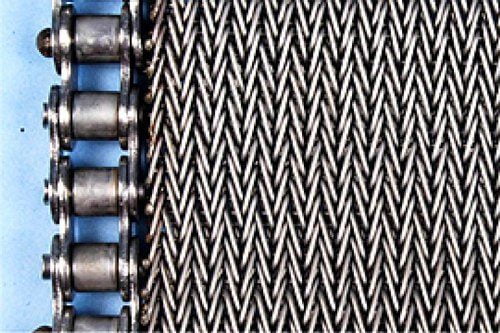
Chain Edged Wire Mesh Belts
| Type | LK3 / LK5 / LK6 |
| Material | High Carbon & SS |
| Length | 1 Mts |
| Usage/Application | High Temperature |
Additional Information:
- Packaging Details: Standard
Chain edged wire mesh belts are versatile solutions for conveying and processing applications across various industries. Constructed with interlinked wire mesh and reinforced edges, these belts offer robustness and flexibility in handling diverse materials. They come in different configurations, including balanced weave, ladder belt, and flat wire belt designs, each tailored to specific application requirements.
These belts find applications in industries such as food processing, heat treatment, electronics, and automotive manufacturing. In the food industry, they are used for baking, frying, cooling, and freezing processes due to their hygienic design and ability to withstand high temperatures. In heat treatment applications, they facilitate the controlled movement of parts through furnaces, ensuring uniform heating and cooling. Additionally, in electronics manufacturing, they are employed for circuit board assembly and component handling, providing precise and reliable conveyance.
The advantages of chain edged wire mesh belts are manifold. Their open mesh construction allows for efficient airflow and drainage, making them suitable for applications requiring heat transfer or liquid drainage. Furthermore, their sturdy construction ensures minimal stretching and elongation, resulting in long service life and reduced maintenance costs. Additionally, the reinforced edges prevent belt collapse and ensure smooth operation, even under heavy loads or in high-speed applications.
Key parameters for the design of chain edged wire mesh belts include wire diameter, mesh pitch, belt width, and edge reinforcement type. Wire diameter and mesh pitch determine the strength and flexibility of the belt, while belt width is tailored to fit specific conveyor dimensions. Edge reinforcement options include welded edges or chain reinforcements, depending on the application requirements and load conditions. By carefully considering these parameters during the design phase, engineers can ensure that the belt meets the performance and longevity expectations of the intended application.
In conclusion, these belts are indispensable components in various industries, offering reliable and efficient material handling solutions. Their robust construction, versatile design options, and suitability for diverse applications make them a preferred choice for conveying and processing operations. With careful attention to design parameters, these belts can enhance productivity, reduce downtime, and contribute to the overall efficiency of industrial processes.

